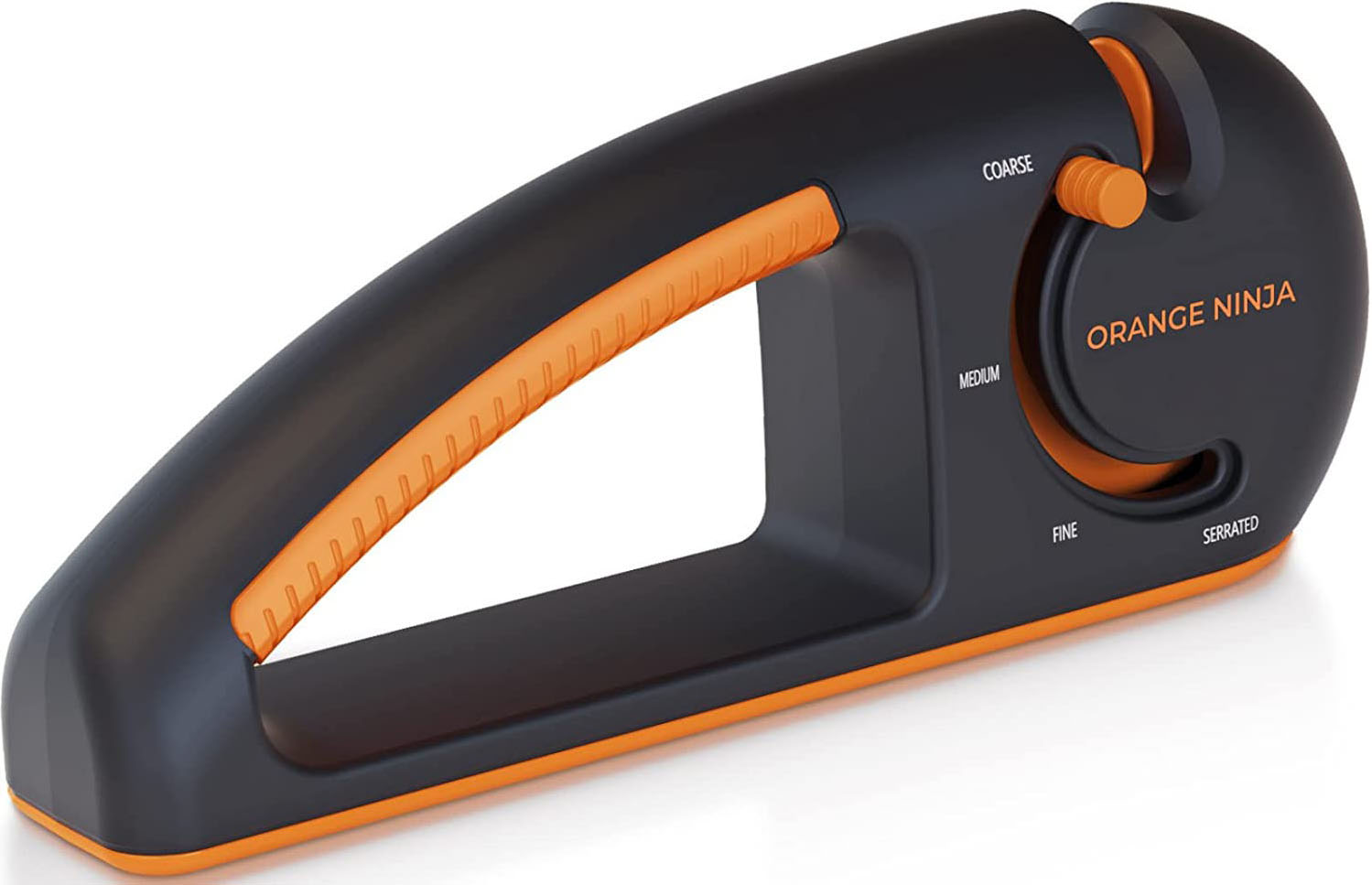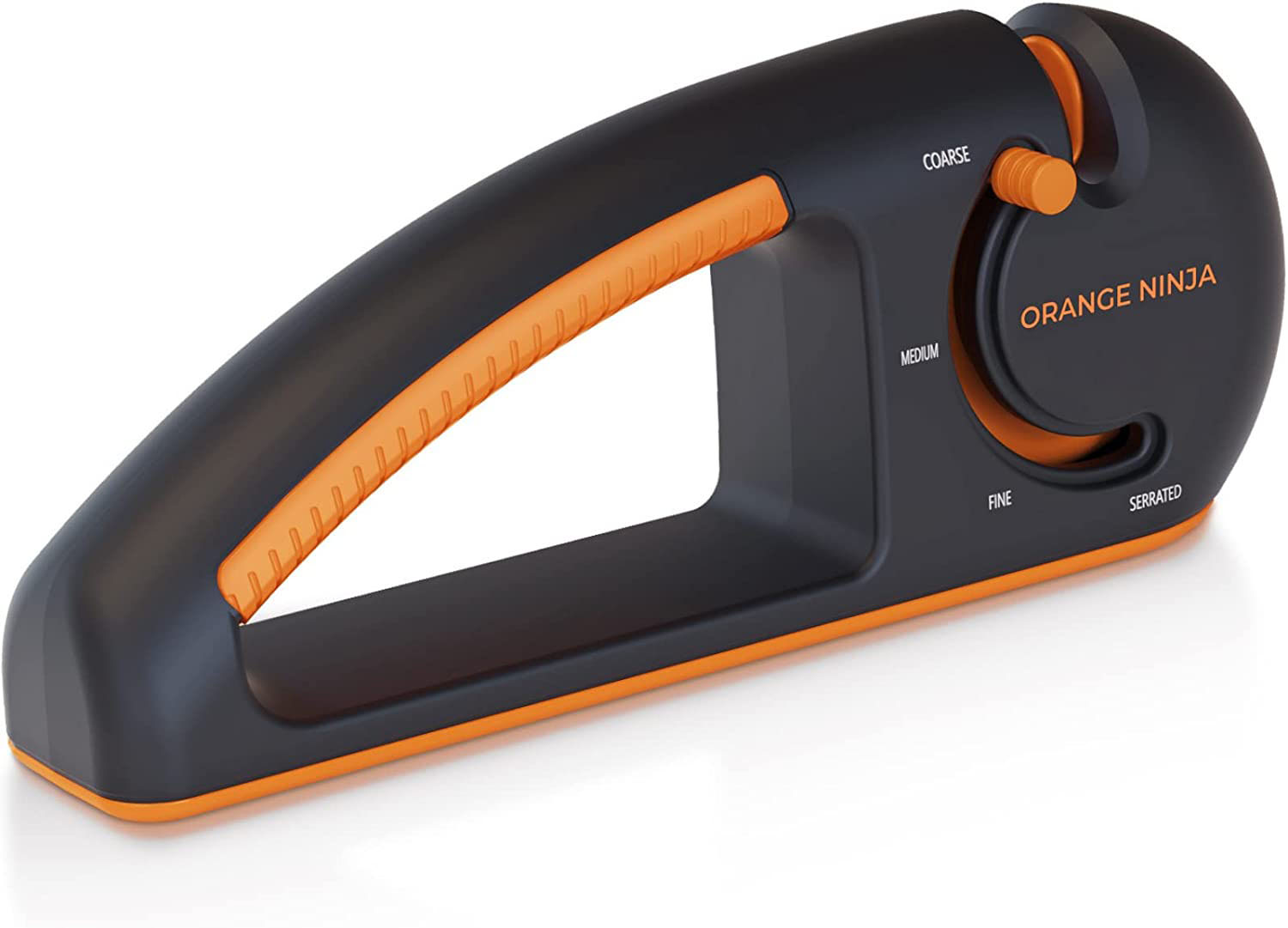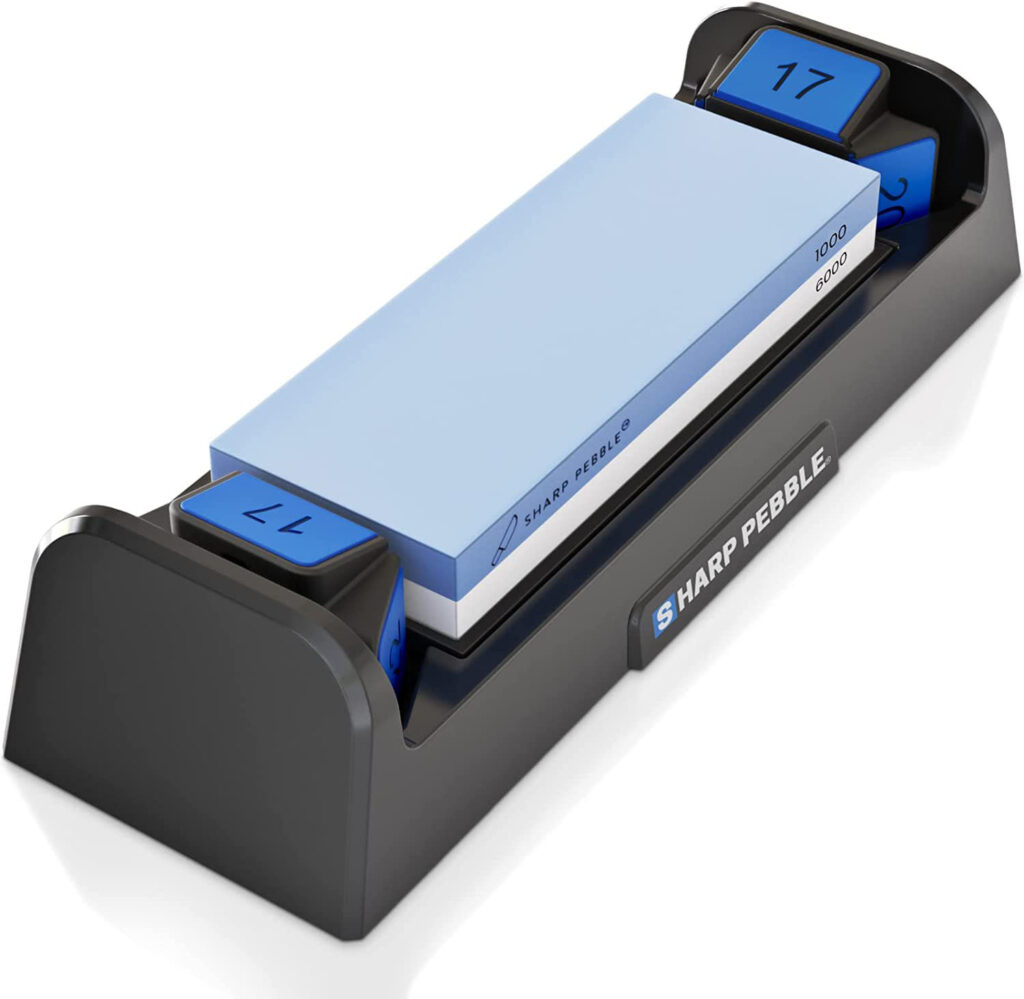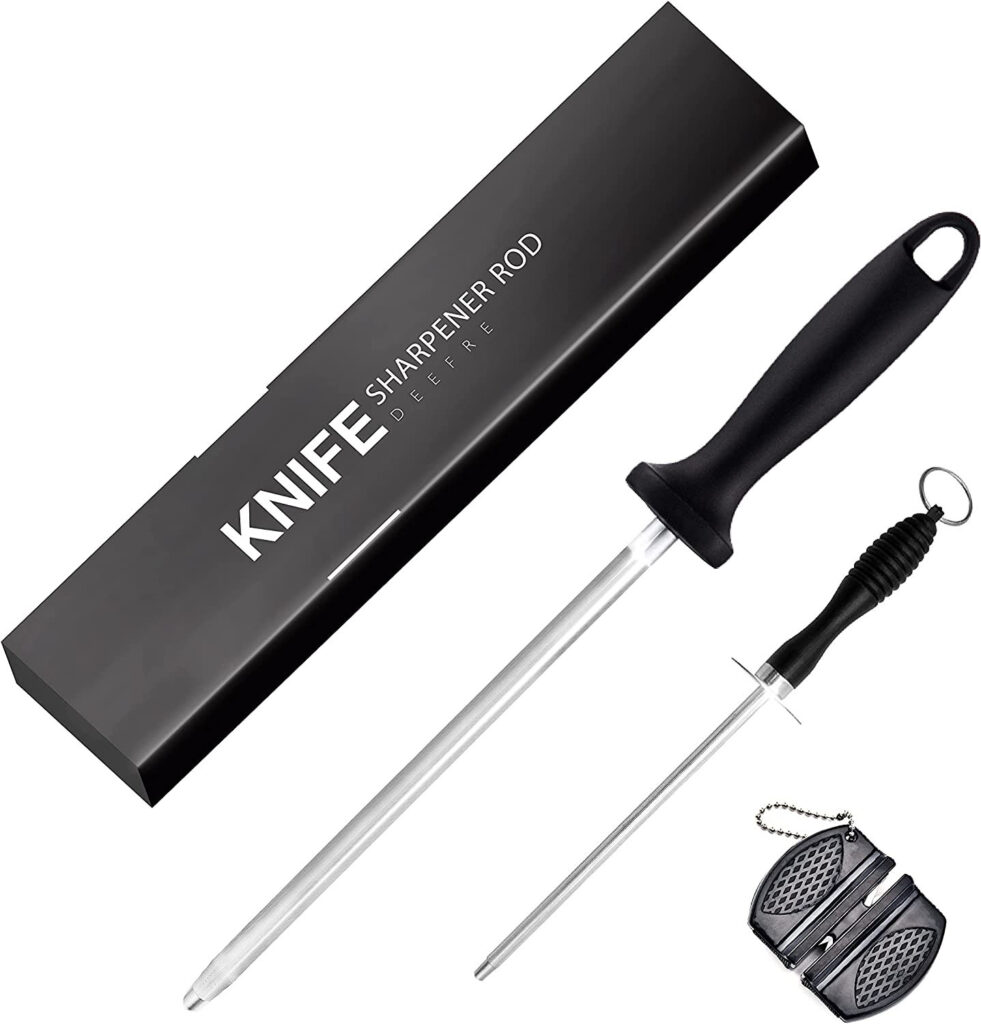The best knife sharpener is a cutting-edge tool designed with cutting-edge ideas for sharpening kitchen knives. The manual and electric types of knife sharpeners are the two most prevalent types on the market. Having a dull knife can make it harder to do your kitchen tasks. An important cooking skill that greatly extends the life of your blades is sharpening. Finding the ideal sharpener might be difficult. Before making a final decision, it is important to consider price, size, and time. In this article, we are gonna give you the best knife sharpener buying guide.
Definition of the best knife sharpener?
Choosing the best knives depends in part on the kind of food that will be chopped, sliced, or otherwise processed. A chef’s knife would be the best option if you require a common parlance knife that can slice and chop both fruit and flesh. We have discussed what kind of knife you should buy in this article. We will tell you about premium materials that are long-lasting and durable. They are used for many different things, including butchering, tanning, hunting, having to cut fruit and veggies, and more.
They are utilized for the vast majority of various things, including butchering, tanning, hunting, and cutting products of the soil, and that is just the beginning. A variety of knife sharpeners are available for purchase, depending on the demands of each individual. You may increase the blade’s sharpness and durability with a knife sharpening.
How to use a knife sharpener for beginners?
The most crucial instrument you can own is a knife. No matter what the work, whether cutting, desiring, or slicing, they are necessary. Having said that, there is a wide variety of knives available for purchase. This essay will assist you in choosing a knife by outlining what is currently valuable and what you should avoid buying in the future. Every cook has to know how to sharpen knives. It not only aids in food preparation but also facilitates a faster cooking procedure. Finding the knife that will work best for you might be a difficult task given the wide variety of knives available nowadays.
The Best Knife sharpener varieties:
Electric Knife Sharpener

The most practical and straightforward method of sharpening knives is with an electric knife sharpener. With a firm grip, hold the knife’s handle in your hand. Without applying excessive force, insert the blade into the slot and pull the knife. Make sure the edges are clear and crisp by repeating this procedure four or five times along the whole length of the blade.
The majority of versions feature slots that, as you pass a knife through the machine, sharpen and polish both sides of the blade using motorized abrasive wheels or discs. Flexible-belt sharpeners, a recent product on the market, use a rotating abrasive belt to sharpen one side of the blade at a time; a guide keeps your knife at the correct angle. Both types typically have at least two stages: an abrasive stage that shapes and edges the metal from the blade, followed by one or more steps to sharpen and refine the edge.
Whom it is intended for Regular cooks who want to sharpen their knives quickly and easily without having to deal with the cleanup that comes with stone sharpening.
Advantages: Electric sharpeners can make even very dull blades sharp. Maintaining the proper angle is simple thanks to the slots or guides. According to Carmona, there are various belt models available. You may select the degree of abrasion and change the belts on your own when they become worn out. Each knife simply needs to be sharpened for a short while.
Disadvantages: They might be heavy to store and are more expensive than manual models. They are loud. You must return a wheel or disc model to the manufacturer for a replacement if the abrasive wears off. Serrated knives are not sharpened very well.
Consider models with a limited number of stages. The lifespan of the knife may be shortened by sharpening it too frequently or for too long. According to Curtis-Welling, if you use an electric model too frequently—more than three times a year—you risk removing enough metal to change the knife’s original design and prevent it from being used as it was intended to be used.
Sharpening stones or whetstones
You can manage everything with a whetstone, including how much material is removed and the form, angle, and level of polish, according to Kramer. You usually require two or three sharpening stones of different abrasion levels—, a- or three stones—and there are many different varieties available. Then you need to learn how to use them properly. The basic technique involves holding the knife stable at a specific angle while gliding it back and forth across the surface of the stone. However, the action is awkward, and maintaining that angle is difficult. You can learn how to sharpen knives by taking a class at a knife shop or by viewing how-to videos online (try YouTube or the website of the knife’s creator).
It’s intended for Serious foodies or knife aficionados who are willing to spend the time selecting the best stone or stones and honing the necessary skills. To keep in touch with your instruments and pay attention to the process of cooking, Kramer advises sitting down with your stones to sharpen your knives.
Advantages: Using sharpening stones is the greatest way to get a professional-quality edge at home. Stones of a high caliber should endure forever.
Disadvantages: According to Aidells, there is a high learning curve to master the proper sharpening process and it can be difficult to choose the perfect sort of stone or stone. It can take anywhere from five to twenty minutes for each knife to sharpen. It’s a nasty task, according to Carmona, to soak and/or lubricate water stones and oil stones because steel particles can wind up all over your counter.
Consider: Extremely coarse stones should be avoided as they could harm your knife. Kramer advises looking for a stone without grit inconsistencies or surface irregularities.
Honing Steel
Brendan Walsh, dean of the School of Culinary Arts at the Culinary Institute of America, claims that there is a great deal of confusion on what to do with the rod that is included in many knife blocks. But an essential component of maintaining a knife is a basic honing rod, commonly known as steel. Ridged steel or fine ceramic is used to make honing steel. Friction from rubbing your knife’s blade against a honing rod helps realign the edge and straighten bent metal fibres from the cutting process. (Consider standing grass blades that have been flattened rising back up.)
Who it’s intended for: Everyone can use honing rods or steel. According to Flynn, honing will improve the performance of your knife and let you go longer between sharpening. For maintenance (every few weeks) in between professional sharpening, home whetstone, or electric sharpening, sharpening rods are excellent. According to Carmona, they are the most effective way to sharpen a serrated knife yourself.
Advantages: By keeping your knife’s edge sharp between sharpening is honing steel may result in less frequent sharpening.
Disadvantages: Learning the proper use requires a small learning curve.
Consider: Consider trying sharpening with a sharpening steel or with a honing steel.
Conclusions
Particularly in a professional kitchen where the majority of the first food preparation is done with clean-cut, sharp blades, knife sharpeners are lifesavers. To keep your knife sharp and shiny for a long time, you must use a sharpening. Avoid using a dull knife at all times because it might lead to cuts and other injuries. Do not wait to purchase a sharpener.



